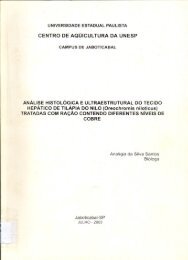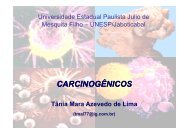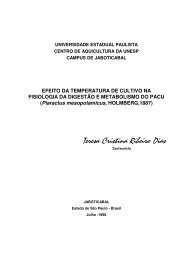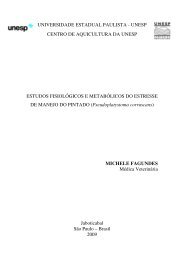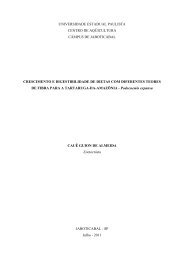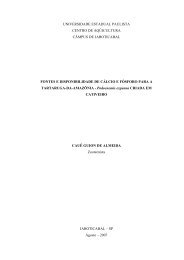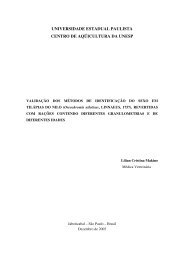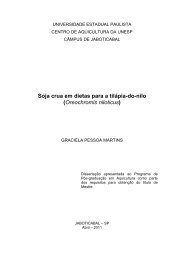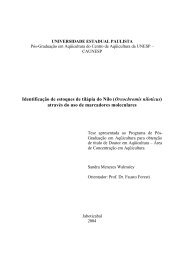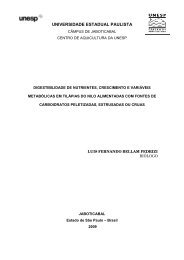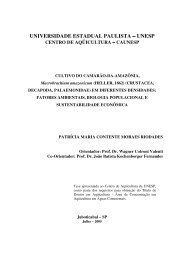Tese Fabio Bittencourt.pdf - Caunesp
Tese Fabio Bittencourt.pdf - Caunesp
Tese Fabio Bittencourt.pdf - Caunesp
You also want an ePaper? Increase the reach of your titles
YUMPU automatically turns print PDFs into web optimized ePapers that Google loves.
2.0 ABSTRACT<br />
The aim of this work was to substantiate the knowledge of protein requirements<br />
of female pacu, Piaractus mesopotamicus evaluating the oocytes quality,<br />
reproductive index and the embryo ontogeny when kept in cages. For that, the<br />
experiment was conducted in the Centro de Desenvolvimento de Tecnologias<br />
para Piscicultura em Tanques-rede located in the Refúgio Biológico, Santa<br />
Helena county – PR. Were distributed in a completely randomized design,<br />
composed of four treatments (crude protein tenors – PB %) and four replicates,<br />
224 breeding pacu P. mesopotamicus in 16 cages (5,0 m 3 each). Were<br />
formulated four diets containing 18, 24, 30 and 36% of PB, being isocalorics,<br />
isocalcium and isophosphoric to feed the fish. In the period which females and<br />
males were able to spawn (December/2009 to January/2010) were selected<br />
and applied the doses of carp pituitary extract. Were collected oocytes samples<br />
before the preparatory stage and at the spawning moment. They were divided<br />
in parts as follows: Gilson’s solution (size or oocytes diameters) and in formol<br />
(histological evaluations). The material reminder was fertilized and placed on<br />
experimental conic incubators (20L) to, subsequently, to collect the eggs,<br />
embryos and larvae for monitoring embryonic development and measurement<br />
the others reproductive parameters. The oocytes diameter percentage<br />
frequency distribution collected before the 1 st hormonal application showed<br />
unimodal behavior for the lower protein content and polymodal trends for the<br />
other treatments. At the moment of spawning, similar situation was verified. The<br />
fertilization and hatching rates were lower in treatments with 30% of PB having<br />
differences (p



